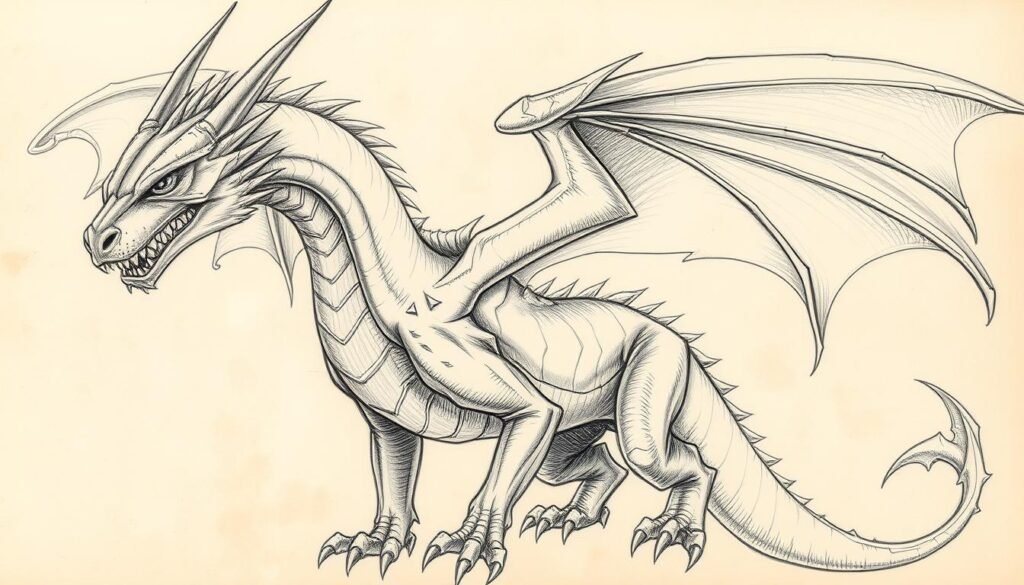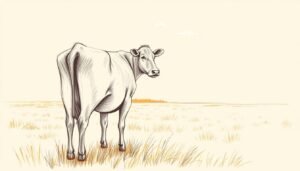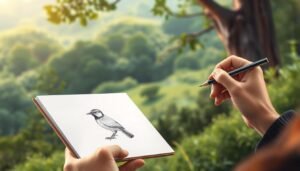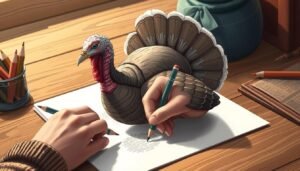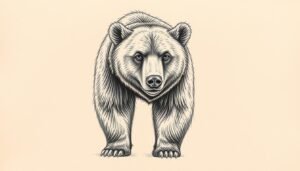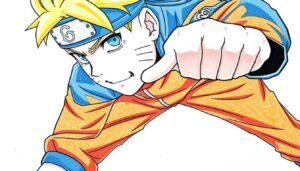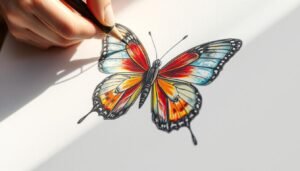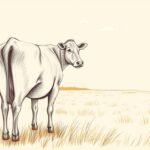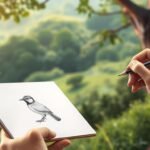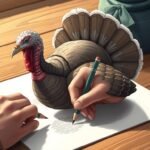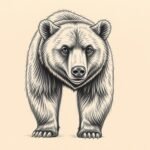Drawing dragons can seem tough, but it’s doable for beginners. With a good guide, anyone can learn to draw these mythical creatures.
My first try at sketching a dragon was hard. But with effort and the right tips, I got better. Knowing a dragon’s anatomy is key. It helps artists make their drawings look real and interesting.
This guide breaks down drawing dragons into easy steps. It’s designed to help beginners feel confident and skilled. With time and practice, anyone can learn to draw these amazing creatures.
Key Takeaways
- Understand the basics of drawing and anatomy
- Learn to break down complex subjects into simpler components
- Develop skills through practice and patience
- Improve your ability to create realistic illustrations
- Gain confidence in your artistic abilities
Understanding Dragon Anatomy and Features
Learning about dragon anatomy is key for artists wanting to draw them well. To draw a dragon right, you need to know its structure and features.
Key Body Parts of a Dragon
A dragon’s body parts are what make it look and work the way it does. These parts are:
- Wings: Wings are vital for flying. They are big and majestic, with a membrane from the body to the tips.
- Body: A dragon’s body can be long and snake-like or sturdy, covered in scales.
- Head: The head shows the dragon’s personality. It has horns, a snout, and eyes that show feelings.
- Tail: The tail helps with balance or can be strong for defense or attack.
- Claws: Sharp claws are for grabbing and tearing.
Common Dragon Species and Their Traits
Dragons vary by species, each with its own look and traits. For more on dragon types, check out CharacterHub’s dragon anatomy guide. Some well-known types are:
- Western Dragons: Usually seen as fire-breathing, evil creatures.
- Chinese Dragons: Good luck symbols, often shown as long, snake-like.
- Wyverns: Smaller, with two legs instead of four, and are agile.
Knowing these types helps artists choose what to include in their dragon drawings.
Essential Drawing Tools and Materials
Before you start drawing, make sure you have the right tools and materials. The right supplies can really make your artwork better.
Recommended Pencils and Papers
The quality of your pencils and paper is key. For drawing dragons, use HB pencils for basic sketches. Use 2B or 4B pencils for shading and darker parts.
Choose a smooth, heavy paper. Look for hot press or cold press papers. They work well with pencils, ink, and watercolors.
| Pencil Type | Use | Paper Type | Use |
|---|---|---|---|
| HB | General Sketching | Hot Press | Detailed Work |
| 2B, 4B | Shading, Dark Details | Cold Press | Textured, Watercolor |
Useful Colors for Your Dragon Art
Choosing colors for your dragon can be tough. Start with earth tones like browns and tans. Add fiery colors like oranges and reds for a pop.
For a bright dragon, try colored pencils or markers. Faber-Castell and Copic have lots of colors to choose from.
Optional Tools to Enhance Your Drawing
While pencils and paper are essential, there are tools that can make your drawings better. Use blending stumps for smooth shading. Erasers help fix mistakes. Reference images can inspire you.
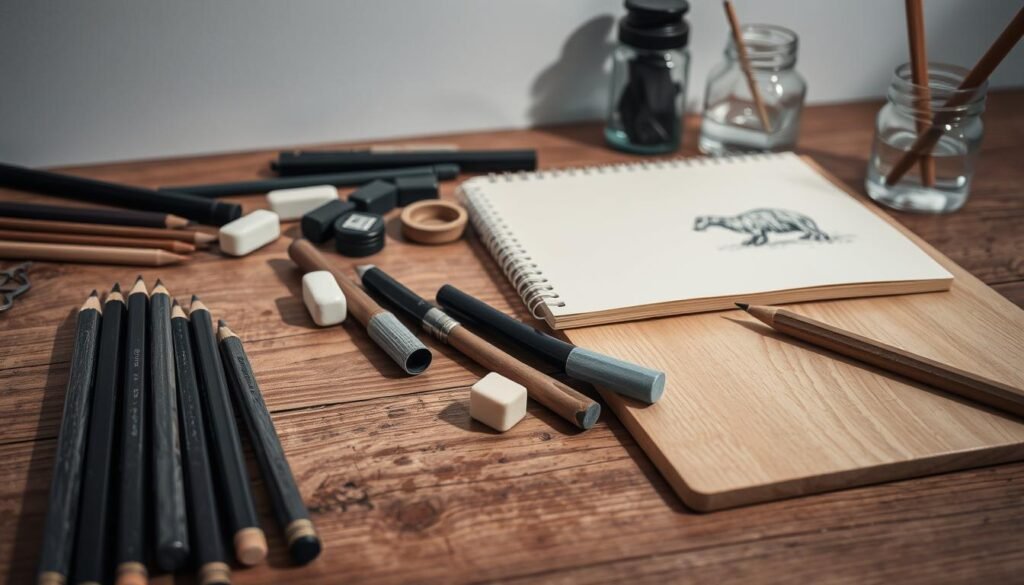
Trying out different tools and materials can help you find your style. It can also make your dragon drawings better.
Step-by-Step Guide to Drawing a Dragon
Learning to draw a dragon is easier when you break it down into simple steps. This way, artists of all levels can create a detailed and captivating dragon.
Sketching the Basic Shapes
To begin, sketch the basic shapes of your dragon’s body. Use circles, ovals, and rectangles to define its proportions and structure.
- Start with a large oval for the body and a smaller circle for the head.
- Add rectangles or ovals for the wings and tail.
- Use lines to indicate the limbs and claws.
Adding Details and Texture
With the basic shapes in place, you can add details and texture. This step is key to making your dragon come alive.
- Add scales, horns, and spikes for a fierce look.
- Define the eyes, nostrils, and mouth for expression.
- Include claws and teeth for a menacing appearance.
For more inspiration, check out this guide on drawing dragons.
Finalizing Your Dragon Drawing
Once you’ve added details, it’s time to finalize your drawing. Refine the lines, add shading, and consider coloring your artwork.
| Step | Description |
|---|---|
| 1 | Refine the outline to make it clean and sharp. |
| 2 | Add shading to create depth and dimension. |
| 3 | Color your dragon using vibrant hues or earthy tones. |
By following these steps, you can create a stunning dragon drawing that showcases your artistic skills.
Techniques for Different Dragon Styles
Exploring various dragon styles can take your artwork to new heights. As an artist, knowing the differences in styles can help you find your unique way of drawing dragons.
Realistic Dragons
Drawing realistic dragons needs a lot of detail and anatomy knowledge. To get a realistic look, pay attention to the scales’ texture, the wings’ structure, and the dragon’s face. Using reference images of real animals, like snakes or lizards, can make your dragon more believable.
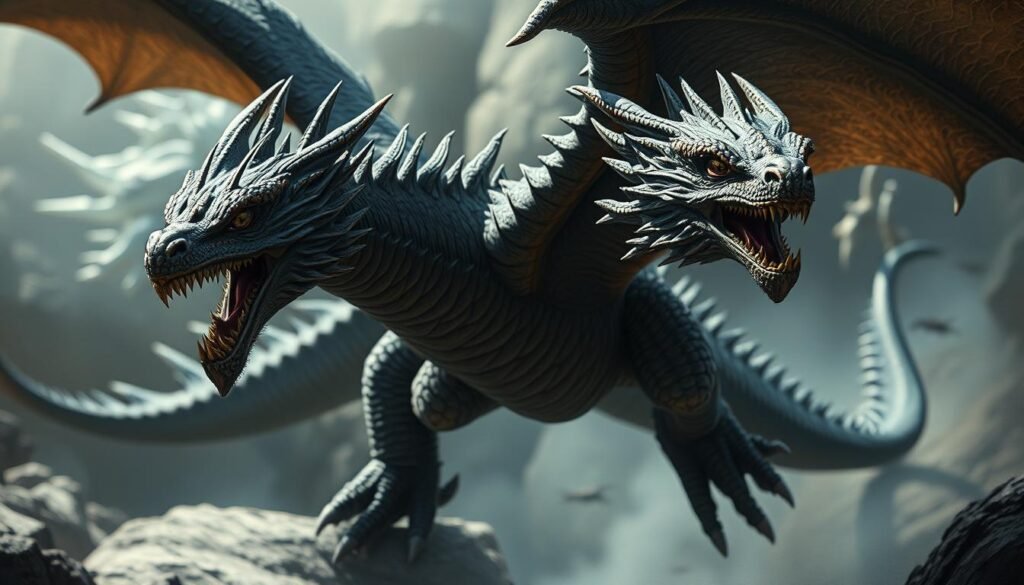
Fantasy and Cartoon Dragons
Fantasy and cartoon dragons let you be more creative with design. Fantasy dragons can have mythical elements and magical features. Cartoon dragons, on the other hand, can be more exaggerated and simple, focusing on character or emotion.
Hybrid Styles and Experimentation
Hybrid styles mix elements from different genres for a unique look. Trying out different techniques, like combining traditional and digital media, can lead to amazing dragon art.
| Style | Characteristics | Techniques |
|---|---|---|
| Realistic | Detailed anatomy, realistic textures | Use reference images, focus on shading and texture |
| Fantasy | Mythical elements, magical features | Experiment with imaginative designs, use vibrant colors |
| Cartoon | Exaggerated features, simplified designs | Focus on character and emotion, simplify details |
By exploring and experimenting with different dragon styles, you can find your unique artistic voice. This will help you create compelling dragon artwork.
Tips for Improving Your Dragon Drawing Skills
Getting better at drawing dragons is a journey. It involves learning the basics, practicing often, and finding inspiration. As you keep drawing, you’ll find your own style and way of drawing. Drawing dragons every day is key to getting better.
Regular Practice and Exercises
It’s important to make drawing a regular part of your routine. Set aside time each day or week to draw different parts of dragons. Try drawing their scales, wings, or faces. Also, draw dragons in different poses or places to get better at drawing.
Try gesture drawing to capture dragons’ movements. Learning about anatomy and studying other artists can also help. For more tips, check out Clip Studio Paint’s drawing tutorials.
Seeking Feedback and Inspiration
Getting feedback from other artists can really help you improve. Join online art communities to share your work and get feedback. Looking at other artists’ work can also inspire you to try new things.
Don’t be scared to try new things in your drawings. Inspiration can come from anywhere, like nature or movies. Being open to learning from others will help you grow as an artist.
Exploring Online Tutorials
Online tutorials are a great way to learn new things about drawing dragons. Websites and platforms offer step-by-step guides and video tutorials. You can learn about drawing shapes, texture, and shading.
Choose tutorials that match your skill level and what you want to learn. Some tutorials focus on specific types of dragons or effects. Using these resources can help you learn faster and improve your drawing.
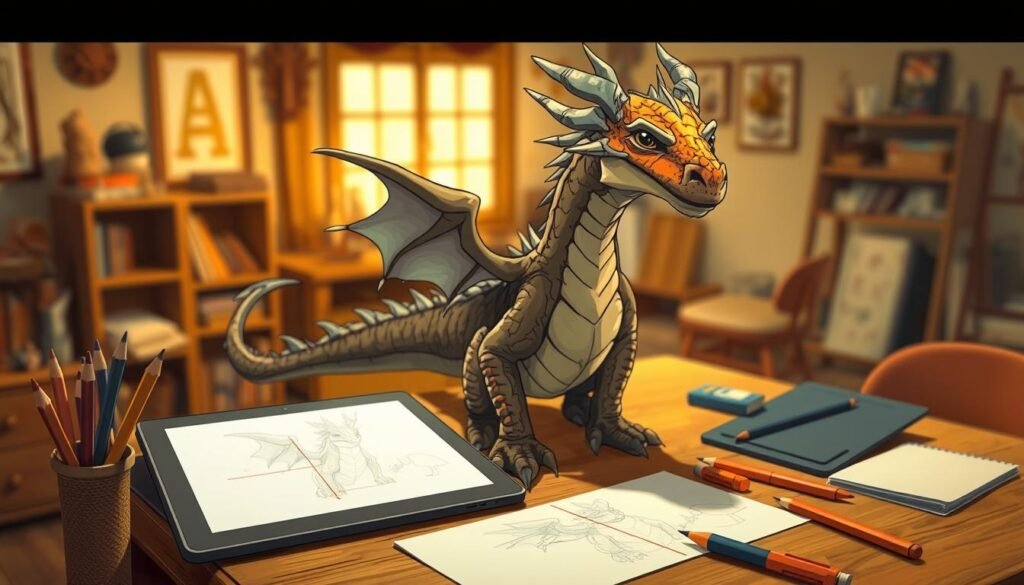
Incorporating Dragons into Fantasy Scenes
To make fantasy scenes pop, think about adding dragons. Dragons can be the main attraction, grabbing the viewer’s attention. They set the mood for the whole scene.
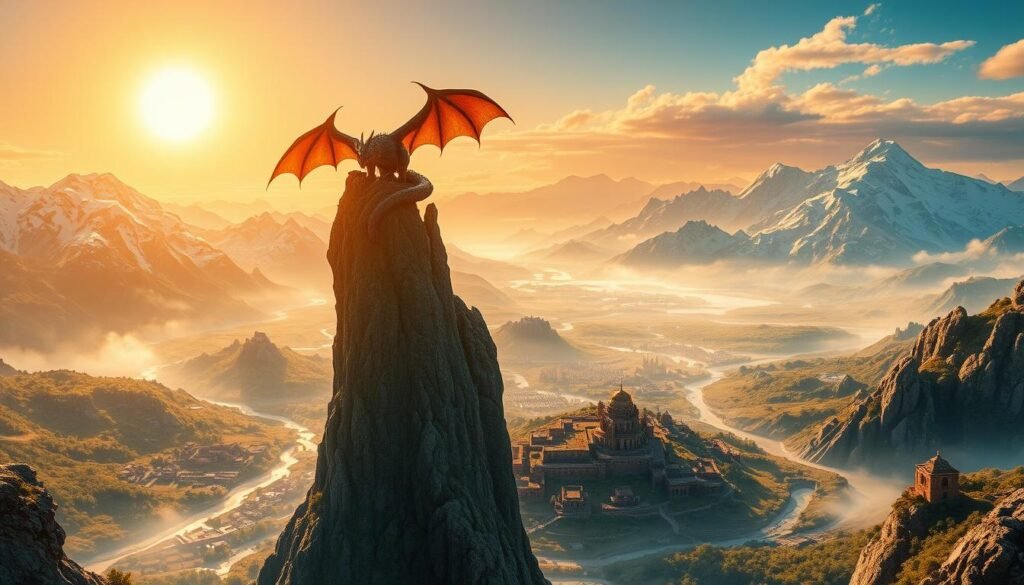
Background Elements to Consider
Dragons need a good background to shine. You can pick from many settings, like:
- Medieval castles
- Mystical forests
- Mountainous landscapes
- Ancient ruins
Each setting brings its own vibe. For example, a medieval castle adds history and grandeur. A mystical forest brings mystery and magic.
| Background | Mood | Characteristics |
|---|---|---|
| Medieval Castle | Grand, Historic | Stone walls, towers, banners |
| Mystical Forest | Mysterious, Enchanted | Tall trees, glowing mushrooms, mist |
Color Schemes and Mood Setting
The colors you pick can change the mood of your scene. Warm colors like oranges and reds make it fiery. Cool colors like blues and greens bring calm.
Dragons can show different feelings with different colors. For instance:
- Red and orange for a fierce dragon
- Blue and green for a wise dragon
- Purple and gold for a majestic dragon
Creating Dynamic Poses for Action
To make scenes lively, use dynamic dragon poses. Show the dragon flying, curled around something, or with other elements.
Here are tips for lively poses:
- Try different angles and views
- Show movement and emotion
- Focus on balance and scene layout
With these tips, your fantasy scenes will be stunning and engaging.
Common Mistakes to Avoid When Drawing Dragons
To draw a dragon that captivates, avoid common mistakes artists make. Drawing dragons is fun and creative but needs detail and anatomy knowledge.
When drawing dragons, artists often make mistakes. Knowing these mistakes helps improve your art and make dragons more compelling.
Proportions and Anatomy Errors
Getting the proportions and anatomy right is key for a believable dragon. Incorrect scaling of body parts can make your dragon look unnatural. For example, if the wings are too small, it’s hard to show the dragon’s power.
Study real animals like lizards and birds to improve your dragon drawings. Focus on the skeletal structure and muscle mass for a solid, believable dragon.
Overlooking Details and Textures
Details and textures are crucial for a realistic dragon drawing. Omission of scales, claws, and other defining features makes your drawing flat. Add textures like rough scales and intricate patterns to make it interesting.
“The devil is in the details.” – Anonymous
By focusing on these details, your art will be more engaging and immersive.
Ignoring Perspective and Depth
Perspective and depth are vital for a dynamic dragon drawing. Failing to consider the viewer’s perspective makes it look flat. Use overlapping elements, atmospheric perspective, and shading to add depth.
For example, if your dragon is roaring or flying, make sure the perspective is right. Try different angles and viewpoints to add variety.
By avoiding these common mistakes, you can greatly improve your dragon drawings. This will help bring your artistic vision to life.
Inspiring Examples and References
Exploring dragon art opens up a world of inspiration. Artists can learn a lot by looking at the work of famous artists. They can also find many resources to improve their skills.
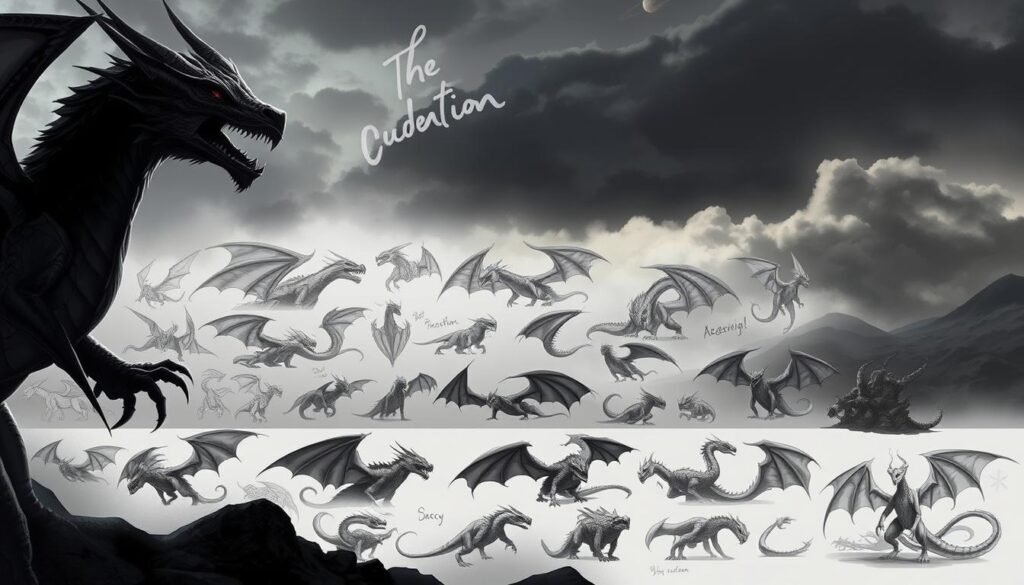
Famous Artists Known for Dragon Art
Many artists have made big impacts on dragon art. Frank Frazetta is famous for his fantasy art, often with dragons. Alan Lee is known for his work on The Lord of the Rings, featuring detailed dragons.
Don’t forget to check out Donato Giancola and Larry Elmore. Their dragon art has amazed people all over the world.
Books and Resources for Dragon Drawing
There are many books and resources to help you draw dragons better. Drawing books on fantasy creatures like dragons are full of tips. Online tutorials and videos can guide you step by step.
- Anatomy for Fantasy Artists by Christopher Hart
- The New Drawing on the Right Side of the Brain by Betty Edwards
- How to Draw Fantasy Art and RPG Maps by William McConnell
Online Communities for Sharing Your Art
Online communities are great for sharing your dragon art. You can get feedback and meet other artists. Sites like DeviantArt and ArtStation are perfect for showing off your work.
Joining forums and social media groups about art keeps you updated. You’ll learn about the latest trends and techniques in dragon art.
Conclusion: Your Journey to Mastering Dragon Art
Mastering dragon art is a journey that never ends. It takes dedication and practice. We’ve covered the key techniques and tools to create these mythical creatures.
Persist in Your Artistic Endeavors
To excel in dragon art, keep learning and trying new styles. Frank Frazetta said, “The only way to do great work is to love what you do.” Loving your art keeps you motivated.
Acknowledge Your Progress
Celebrate every small step in your art journey. Seeing how far you’ve come helps you know what to work on next. This keeps you inspired to keep improving at drawing dragons.
Explore New Horizons
Don’t shy away from new styles and techniques. Trying different things helps you find your unique voice. Remember, the journey to mastering dragon art is just as valuable as the end result.


